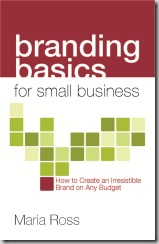I’ve long admired Apple for its branding prowess, it’s ability to connect with customers, to innovate, to “think different.” But the recent fight they are having with Adobe over Flash on the iPhone and iPod has got me seeing their brand in a whole new light – and not a very flattering one.
Today’s WSJ had an article about Apple winning new ground in their very public war with Adobe about the decision Apple made to not accept Adobe’s Flash programming – the programming many websites already use for video and animation – on its devices. Apple has shut out Adobe from its own devices to promote its own tools and its “under development” HTML 5. Steve Jobs has lashed out with technical reasons why Flash isn’t good for its own devices, and Adobe retaliated with full page ads trying to get Apple on its side and garner public support.
I admit to not even knowing these technical reasons. I’m more interested in the perception and brand impact. I’ve never seen such brand hypocrisy in blatant black and white in the same article. Out of one side of their mouth, Apple claims it believes in open standards “like HTML 5” (hmmm….interesting, their own product) and says Flash is proprietary to Adobe. It may well be, but from a customer point of view (and developers are their customers too) Flash is what most folks out there are already using and what most websites and apps already use. Now, Apple is forcing customers back to the drawing board, or worse, forcing them to maintain separate apps and websites for different devices. The whole point of “open standards” is that apps can be used on any device and if many companies have already invested in using Flash to date, why not just also allow Flash on the Apple devices as people move over to using HTML 5, if it truly is an open standard?
Out of the other side, the article states that Apple wants to protect its competitive advantage (which I totally get and respect) by preventing developers from creating apps for the iPhone or iPad that could be used on other devices. If memory serves, when Microsoft got slammed for bundling their Internet Explorer browser with their operating system, wasn’t this action labeled “monopoly activity” and an anti-competitive practice? One customer in the WSJ article, Venveo, a web-design firm, says it has to build apps and websites for Apple devices separately because it has little choice due to iPhone’s popularity. Sounds like a monopolistic chokehold to me.
When did Apple turn into “the man”? I guess it was inevitable. Smart, friendly and fighting the “big dogs” can only work as a brand as long as you’re the small dog. Then when you get to the other side, you start to act just like the companies you used to condemn because you can see the upside. And other companies are taking their cue: I read yesterday that the new UrbanSpoon dining reservation system that is rolling out into full launch can only work for restaurants on an IPad, not on the restaurant’s existing reservations system.
Again, I don’t claim to understand the technical reasons for these decisions- but I wasn’t born yesterday: I doubt it has nothing to do with market dominance and freezing out the competition just because you can. My main issue is that Apple is doing something that forces customers to react a certain way, gives them more work, more expense and less options – and tarnishes their well-established brand promise in the process.





